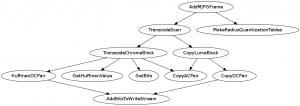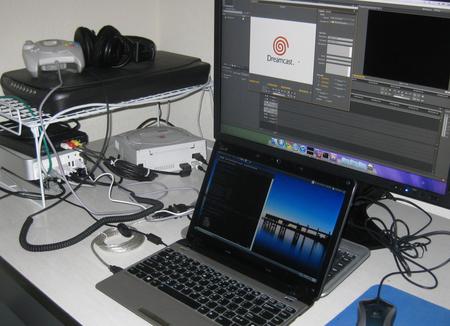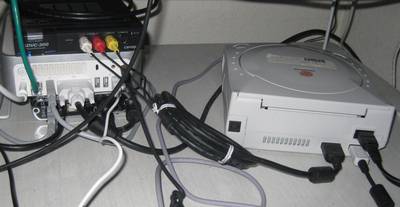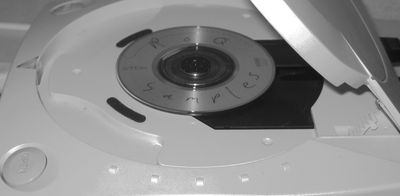I was called upon to help reverse engineer an old video codec called VideoVision (FourCC: PGVV), ostensibly from a company named Radius. I’m not sure of the details exactly but I think a game developer has a bunch of original FMV data from an old game locked up in this format. The name of the codec sounded familiar. Indeed, we have had a sample in the repository since 2002. Alex B. did some wiki work on the codec some years ago. The wiki mentions that there existed a tool to transcode PGVV data into MJPEG-B data, which is already known and supported by FFmpeg.
The Software
My contacts were able to point me to some software, now safely archived in the PGVV samples directory. There is StudioPlayer2.6.2.sit.hqx which is supposed to be a QuickTime component for working with PGVV data. I can’t even remember how to deal with .sit or .hqx data. Then there is RadiusVVTranscoder101.zip which is the tool that transcodes to MJPEG-B.
Disassembling for Reverse Engineering
Since I could actually unpack the transcoder, I set my sights on that. Unpacking the archive sets up a directory structure for a component. There is a binary called RadiusVVTranscoder under RadiusVVTranscoder.component/Contents/MacOS/. Basic deadlisting disassembly is performed via ‘otool’ as shown:
otool -tV RadiusVVTranscoder | c++filt
This results in a deadlisting of both PowerPC and 32-bit x86 code, as the binary is a “fat” Mac OS X binary designed to run on both architectures. The command line also demangles C++ function signatures which gives useful insight into the parameters passed to a function.
Pretty Pictures
The binary had a lot of descriptive symbols. As a basis for reverse engineering, I constructed call graphs using these symbols. Here are the 2 most relevant portions (click for larger images).
The codec initialization generates Huffman tables relevant to the codec:

The main decode function calls AddMJPGFrame which apparently does the heavy lifting for the transcode process:

Based on this tree, I’m guessing that luma blocks can be losslessly transcoded (perhaps with different Huffman tables) which chroma blocks may rely on a different quantization method.
Assembly Constructs
I started looking at the instructions (the x86 ones, of course). The binary uses a calling convention I haven’t seen before, at least not for the x86: Rather than pushing function arguments onto the stack, the code manually subtracts, e.g., 12 from the ESP register, loads 3 32-bit arguments into memory relative to ESP, and then proceeds with the function call.
I’m also a little unclear on constructs such as “call ___i686.get_pc_thunk.bx” seen throughout relevant functions such as MakeRadiusQuantizationTables().
I’m just presenting what I have so far in case anyone else wants to try their hand.


